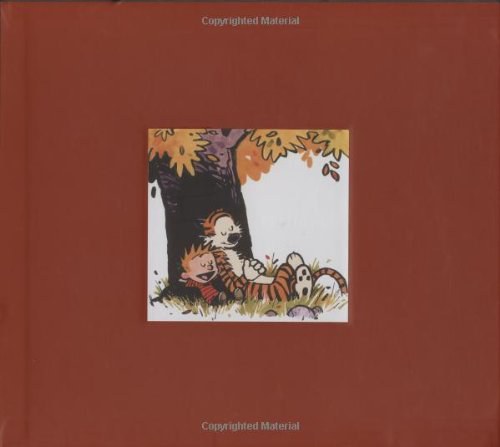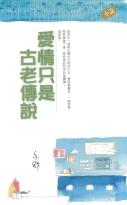
碳材料科学与工程:表征
书刊介绍
碳材料科学与工程:表征 内容简介
碳材料由于其结构多样性,导致其性能多样化,因而应用领域广阔,碳材料研究已受到全球材料科学界、物理学界、化学界的广泛关注。本书系统介绍了碳材料表征技术及应用。包括X射线粉末衍射、小角X射线散射、透射电镜、扫描电子显微镜、图像分析、拉曼光谱、X射线光电子能谱、磁电阻、电化学性能、气体吸附/解吸等温线、热分析、表面官能团滴定测定、程序升温脱附技术。本书读者对象为材料领域的科技人员、研究生和高校教师。本书以英文著述,并与Elsevier出版集团合作,已在海外出版。
碳材料科学与工程:表征 本书特色
碳材料由于其结构多样性,导致其性能多样化,因而应用领域广阔,碳材料研究已受到全球材料科学界、物理学界、化学界的广泛关注。本书系统介绍了碳材料表征技术及应用,包括 X射线粉末衍射、小角X射线散射、透射电镜、扫描电子显微镜、图像分析、拉曼光谱、X射线光电子能谱、磁电阻、电化学性能、气体吸附/解吸等温线、热分析、表面官能团滴定测定、程序升温脱附技术。本书读者对象为材料领域的科技人员、研究生和高校教师。本书以英文著述,并与 Elsevier出版集团合作已在海外出版。
碳材料科学与工程:表征 目录
ListofContributors.................................................................................Preface...............................................................................................Acknowledgments................................................................................CHAPTER 1 Introduction............................................................ 1Michio Inagaki, Feiyu Kang1.1 Carbon Materials............................................................... 11.2 Characterization of Carbon Materials.................................... 31.3 Structure of the Present Book.............................................. 5References.............................................................................. 6CHAPTER 2 X-ray Powder Diffraction ......................................... 7Norio Iwashita2.1 Introduction...................................................................... 72.2 X-ray Diffraction Pattern of Carbon Materials........................ 82.3 Parameters Determined by X-ray Diffraction.........................102.4 Instrumentation ................................................................112.5 Specifications for Measurement ..........................................142.5.1 Preparation of Sample for X-ray Measurements............ 142.5.2 Measurement and Intensity Correction of DiffractionProfiles.................................................................. 142.5.3 Correction of Diffraction Angle With InternalStandard ................................................................ 162.5.4 Determination of Full Width at Half MaximumIntensity ................................................................ 172.5.5 Accuracy of the Values Determined............................ 182.6 Degree of Graphitization ...................................................182.7 Key Issues for Measurement...............................................212.7.1 Diffraction Pattern................................................... 212.7.2 Use of Internal Standard........................................... 212.7.3 Use of Thin Sample Holder....................................... 222.7.4 Indexing the Diffraction Line .................................... 232.7.5 Separation into Component Profiles............................ 232.8 Concluding Remarks.........................................................24References.............................................................................24 CHAPTER 3 Small-Angle X-ray Scattering..................................27Katsuya Fukuyama, Yoshikiyo Hatakeyama3.1 Introduction.....................................................................273.2 Fundamentals ..................................................................283.3 Key Issues for the Measurements ........................................333.4 Applications for Carbon Materials.......................................353.4.1 Porous Carbon Fibers............................................... 353.4.2 Glass-Like Carbons ................................................. 363.4.3 Mesocellular Foam Carbons (Silica-TemplatedCarbons)................................................................ 383.4.4 Open Pores Formed by Air Oxidation......................... 403.5 Concluding Remarks.........................................................42References.............................................................................42CHAPTER 4 Transmission Electron Microscopy..........................45Sylvie Bonnamy, Agne`s Oberlin4.1 Introduction.....................................................................454.2 Modes of Transmission Electron Microscopy ........................464.2.1 Diffracting Mode..................................................... 474.2.2 Imaging Modes....................................................... 474.3 Key Issues for Observation ................................................484.3.1 Object Thickness (Weak Phase Object) ....................... 484.3.2 Contrast Transfer Function of the TransmissionElectron Microscope................................................ 494.3.3 Diffusion Contrasts.................................................. 544.3.4 Fresnel Fringes, ie, Edge Fringes ............................... 544.5 Applications for Carbon Materials.......................................564.5.1 Transmission Electron Microscopy Modes to StudyCrystallinity of Carbon Materials ............................... 564.5.2 Transmission Electron Microscopy Modes inthe Study of Carbonization and Graphitization ............. 624.6 Conclusions.....................................................................69References.............................................................................69Further Reading......................................................................70CHAPTER 5 Scanning Electron Microscopy ...............................71Akira Yoshida, Yutaka Kaburagi, Yoshihiro Hishiyama5.1 Introduction.....................................................................715.2 Instrumentation and Resolving Power ..................................725.2.1 Instrumentation....................................................... 735.2.2 Magnification and Resolving Power of theScanning Electron Microscope................................... 755.2.3 Edge Effects Appearing in SE Mode Images................ 76 5.3 Specimen Preparation........................................................775.4 Observation With the Out-Lens Objective Lens System ..........795.5 Observation With the Snorkel Objective Lens System.............815.6 Observation With the In-Lens System..................................825.7 Electron Channeling Effect ................................................835.7.1 Electron Channeling Effect for Kish Graphite .............. 835.7.2 Electron Channeling Pattern for Kish Graphiteand HOPG Specimens.............................................. 865.7.3 Mapping and Crystal Grain Size Evaluation................. 885.8 Concluding Remarks.........................................................91References.............................................................................92CHAPTER 6 Image Analysis ......................................................95Kyoichi Oshida6.1 Introduction.....................................................................956.2 Image Analysis Methods ...................................................966.2.1 Process of Image Analysis ........................................ 966.2.2 Analysis of Space Frequency..................................... 976.2.3 Three-Dimensional Transmission ElectronMicroscopy ...........................................................1006.2.4 Software for the Analysis ........................................1006.3 Structure Analysis Through Transmission ElectronMicroscopy ................................................................... 1016.3.1 Cup-Stacked Type Carbon Nanotubes ........................1016.3.2 Carbon Nanotubes Loaded With Metal Particles ..........1046.3.3 Thin Graphite ........................................................1086.3.4 Disordered Carbon .................................................1086.4 Texture Analysis Through Scanning ElectronMicrographs .................................................................. 1136.5 Texture Analysis Through Optical Micrographs................... 1166.6 Concluding Remarks....................................................... 120References........................................................................... 121CHAPTER 7 Raman Spectroscopy............................................ 125Yutaka Kaburagi, Akira Yoshida, Yoshihiro Hishiyama7.1 Introduction................................................................... 1267.2 Fundamentals ................................................................ 1267.3 Key Issues for the Measurements ...................................... 1297.3.1 Laser Probe Sampling Depth....................................1297.3.2 Polarization of Laser Light ......................................1297.3.3 Sampling Area.......................................................1317.3.4 Temperature ..........................................................1327.3.5 Elimination of Background Intensity .........................132 7.3.6 Excitation Energy Dependence of D Band..................1337.3.7 Calibration of Raman Frequency...............................1347.3.8 Equipment ............................................................1367.4 As a Measure for Structure Characterization ....................... 1387.4.1 G Band.................................................................1387.4.2 D and D0 Bands .....................................................1417.5 Concluding Remarks....................................................... 149References........................................................................... 150CHAPTER 8 X-ray Photoelectron Spectroscopy ........................ 153Hidetaka Konno8.1 Introduction................................................................... 1538.2 Practical Side of Measurements ........................................ 1548.3 State Analysis................................................................ 1568.3.1 Determination of Binding Energy..............................1568.3.2 Background Subtraction ..........................................1588.3.3 Peak Separation .....................................................1598.3.4 State Analysis Using Chemical Shift .........................1648.4 Semiquantitative Analysis................................................ 1668.5 Concluding Remarks....................................................... 168References........................................................................... 169CHAPTER 9 Magnetoresistance............................................... 173Yoshihiro Hishiyama, Yutaka Kaburagi, Michio Inagaki9.1 Introduction................................................................... 1749.2 General Scheme of Dr/r0 Change With Graphitization ......... 1749.3 Measurement of Magnetoresistance ................................... 1789.3.1 Specimen Shape.....................................................1789.3.2 Magnetic Field Orientation Schemes .........................1799.3.3 Instruments ...........................................................1829.4 Magnetoresistance Parameters for Coke ............................. 1859.4.1 Coke B and Gilsonite Coke......................................1859.4.2 Coke Prepared From Hydrogenated EthyleneTar Pitch...............................................................1869.5 Magnetoresistance Parameters for Carbon Fibersand Extruded Coke......................................................... 1899.5.1 Benzene-Derived Vapor-Grown Carbon Fiberand Extruded Coke.................................................1899.5.2 Other Carbon Fibers ...............................................1919.6 Magnetoresistance Parameters for Highly CrystallizedGraphite Materials.......................................................... 192 9.7 Concluding Remarks....................................................... 194Supplement: Background of the Characterization of CarbonMaterials With Dr/r0 ............................................................ 195S-1 Origin of the Sign of Dr/r0............................................... 195S-2 Microtexture .................................................................. 197S-3 Relationship Between Microtexture and Magnetoresistance.... 199References........................................................................... 203CHAPTER 10 Electrochemical Performance............................. 205Soshi Shiraishi10.1 Introduction................................................................. 20510.2 Fundamentals............................................................... 20610.2.1 Capacitance .......................................................20610.2.2 Construction of Measurement Cell.........................20810.2.3 Electrochemically Analytical Mode .......................20910.2.4 Differential Capacitance and IntegralCapacitance .......................................................21110.2.5 Definition of Specific Capacitance.........................21210.3 Measurement Procedure................................................. 21410.3.1 Measurement Cell...............................................21410.3.2 Preparation of Carbon Electrode............................21610.3.3 Aqueous Acid Electrolyte System(by Three-Electrode Cell).....................................21810.3.4 Organic Electrolyte System(by Three-Electrode Cell).....................................21910.3.5 Organic Electrolyte System(by Two-Electrode Cell) ......................................22110.4 Concluding Remarks..................................................... 224References........................................................................... 224CHAPTER 11 Gas Adsorption/Desorption Isothermfor Pore Structure Characterization..................... 227Yoko Nishi, Michio Inagaki11.1 Introduction................................................................. 22811.2 Fundamentals............................................................... 22911.3 Key Issues for the Measurements and Analyses ................. 23211.3.1 Sample Amount for the Measurement ....................23211.3.2 Pretreatment of Sample........................................23211.3.3 BrunauereEmmetteTeller Method ........................23311.3.4 as Plot ..............................................................23411.3.5 BarretteJoynereHalenda Method..........................235 11.3.6 DubinineRadushkevich Method............................23711.3.7 Density Functional Theory Method........................23811.4 Application to Carbon Materials ..................................... 23911.4.1 Microporous Carbons ..........................................23911.4.2 Mesoporous Carbons...........................................24111.4.3 Measurements Using Various Gases as Adsorbate ....24311.4.4 Gravimetric Measurement of Adsorption/Desorption of CO2 ..............................................24411.5 Concluding Remarks..................................................... 245References........................................................................... 246CHAPTER 12 Thermal Analysis ............................................... 249Ming-ming Chen12.1 Introduction................................................................. 24912.2 Fundamentals in Thermal Analyses ................................. 25012.3 Key Issues for the Measurements .................................... 25212.4 Applications of TG and DTG for Carbon Materials ............ 25612.4.1 Biomasses .........................................................25612.4.2 Pitches..............................................................25812.4.3 Organic Polymers ...............................................25812.4.4 Measurements in Oxygen.....................................26312.5 Applications of DTA and DSC for Carbon Materials .......... 26512.5.1 Pitches..............................................................26512.5.2 Organic Polymers ...............................................26712.5.3 Intercalation Reactions ........................................26912.6 Concluding Remarks..................................................... 269References........................................................................... 270CHAPTER 13 Titration Method for the Identificationof Surface Functional Groups.............................. 273Yern Seung Kim, Chong Rae Park13.1 Introduction................................................................. 27313.2 Basic Concept of Titration Method.................................. 27613.3 Instrumentation ............................................................ 27913.4 Specification for the Methodology................................... 27913.4.1 Reaction Step.....................................................28013.4.2 Filtration Step ....................................................28113.4.3 Titration Step.....................................................28113.5 Analysis of the Titration Results ..................................... 28113.6 Key Points for the Titration Measurements ....................... 284 13.6.1 Preparation of the Reaction Mixture for the ReactionStep..................................................................28413.6.2 Agitation Method and Period................................28413.6.3 Titration Condition and End Point Determination.....28513.7 Concluding Remarks..................................................... 285References........................................................................... 285CHAPTER 14 Temperature Programmed Desorption.................. 287Takafumi Ishii, Takashi Kyotani14.1 Introduction................................................................. 28714.2 TPD Experimental Conditions and Apparatus.................... 28814.3 Assignment of TPD Peaks to Surface FunctionalGroups........................................................................ 29114.4 Secondary Reactions During a TPD Run .......................... 29614.5 Effect of Air Exposure on TPD Patterns ........................... 29914.6 Effect of Inorganic Matter in Carbons.............................. 30014.7 Concluding Remarks..................................................... 302References........................................................................... 302Index...................................................................................................307碳材料科学与工程:表征 作者简介
Michio Inagaki教授,日本北海道大学荣休教授。担任过日本碳素学会主席,JSPS117委员会主席,Carbon杂志副主编。获得过美国和中国碳素学会、日本陶瓷学会学术贡献奖。出版8本书,发表700多篇学术论文。Feiyu Kang(康飞宇),教授,清华大学深圳研究生院院长。现任SCI刊物《Carbon》顾问编委,SCI刊物《新型炭材料》副主编,层间化合物系列国际会议(ISIC)国际顾问委员会委员。曾获国家发明奖等多项奖励。出版中英文专著5部,在国内外发表论文200多篇。
相关推荐
-

古蹟入門
序古蹟開門展開台灣古蹟的發現之旅李乾朗古蹟就是經過時間的考驗,能幸運地躲過天災人禍而留存下來的古代建築物。它不一定是住宅或宮殿,還包括城牆、城門、堤防、碼頭、橋...
-

追迹三代
孙庆伟,江西上饶人。1988年入北京大学考古系学习,先后获学士、硕士和博士学位,现任北京大学考古文博学院教授、副院长。主要从事夏商周考古研究和教学工作,多次参加...
-

皮革实战全程指导:韩式皮具制作教程 (韩国皮革名家多年经营皮革工坊心得和技巧总结,初学者必备皮革工艺教科书,从理论基础到中高级教程的全程指导,大量高清图片以全图解,附作品原大纸型)
洪正基,大学时期主修产业设计专业,毕业后,曾进入设计公司工作,工作内容涉及木工艺、金属工艺等多个领域。2006年,作者开始从事皮革工艺,现在经营着一家皮革工坊和...
-

梦想金山
《梦想金山:一个坚持梦想的创业故事》这不仅仅是一部讲述金山软件企业史的书,更是一部展现中国软件产业20年跌宕起伏史的书。从1988年求伯君研发WPS、1996年...
-

YOU:身体使用手册
“自己是自己最好的医生”是《YOU:身体使用手册(软精装)》全书的核心理念。每个人都可以自觉地重视并控制自己的健康,并且尽可能科学地了解自己的身体。作为一本正宗...
-

Financial Economics
For undergraduate and graduate courses in corporate finance, financial managemen...
-

中国近代史
《中国近代史》内容简介:《中国近代史》被誉为中国近代史研究的开山之作,一个时代的经典。全书从鸦片战争讲起,一直叙述到其时正
-

幸福的方法
“幸福是人类共同的追求。”——中共中央政治局委员、广东省委书记汪洋强力推荐本书!★★★★★中信幸福课堂你幸福吗?幸福到底是什么?你想学习幸福的方法吗?“哈佛大学...
-

思考就是我的抵抗
女人为何需要《一间自己的房间》?伍尔夫日记里袒露全部心迹在精神疾病的困扰和连绵战火的威胁下审视每一个日子不必匆忙,不必火花四溅,不必成为别人,只需做自己♛“我意...
-

II异站
《异战》是《100:科幻之书》系列的第二本,主要收录的主要作者和作品有:斯特鲁伽茨基兄弟《造访者》,库尔特•冯内古特《2 B R 0 2 B》,哈兰•埃里森的《...
-

明日ちゃんのセーラー服 1
作者简介博 日本漫畫家、插畫家。 代表作品:《明日同學的水手服》(青文出版)
-

擒庄秘籍
理查德·D.威科夫 量价分析鼻祖,20世纪初以来令人景仰的三大操盘手之一,是许多现代投资大师仿效的典范。他有很多理论,至今依然影响着职业操盘手的理念和判断。他还...
-

营造法式译解
营造法式译解 本书特色 宋朝李诫撰的《营造法式》崇宁二年刊行本已失传,南宋绍兴十五年(1145年)曾重刊,但亦未传世。南宋后期平江府(今苏州)曾重刊,但仅留残本...
-

柑桔病虫害防治图谱
柑桔病虫害防治图谱 内容简介 本套图谱是由广西农业科学院植物保护研究所组织农业值保专家编绘而成。根据作物品种分水稻、玉米小麦、大豆、红薯、甘蔗、蔬菜、花生油菜、...
-

《コドモノクニ名作選 冬〈Vol.5〉》书籍《コドモノクニ名作選 冬〈Vol.5〉》
ファン垂涎の幻の逸品「武井武雄のイロハカルタ」を完全復刻。冬号よりセレクトした名作Bookと、一家で遊べるレトロなカルタ
-

制造同意
迈克尔·布若威(Michael Burawoy),加州大学伯克利分校社会学系教授,2003~2004年度美国社会学协会会长。“社会学马克思主义”的旗帜性人物,始...
-

我在云上爱你
张小娴,香港女作家。1995年推出第一部长篇小说《面包树上的女人》而走红文坛,继亦舒之后,成为香港最受欢迎的言情小说家。她的作品善于描写都市的男欢女爱,深受年轻...
-

Uncovered Signs in Shanghai
This new exciting book includes more than 170 previously unseen ‘ghost signs’ th...
-

意大利电影
作品目录第三版序第二版序第一版序1.背景:默片时代和法西斯统治时代2.新现实主义大师——罗西里尼、德·西卡与维斯康蒂3.探
-

无论如何都想告诉你的世界史
玉木俊明,1964年生于大阪,京都产业大学经济学院教授。1987年毕业于同志社大学文学部文化学系,1993年同校系研究生院博士课程修毕。1996年担任京都产业大...





